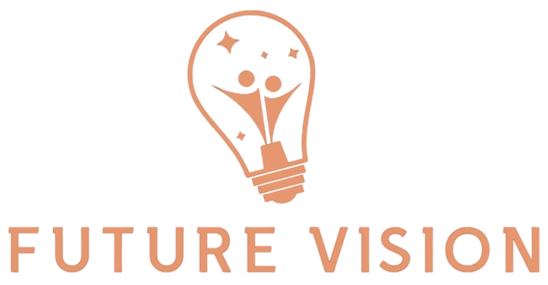Artificial Intelligence (AI) has become a powerful tool in enhancing cybersecurity, reshaping how organizations detect, prevent, and respond to cyber threats. As cyberattacks become more sophisticated, traditional security systems are struggling to keep up. AI brings speed, automation, and the ability to analyze massive amounts of data, enabling companies to stay ahead of increasingly complex threats. This article explores the profound impact of AI on the future of cybersecurity, examining its benefits, challenges, and evolving role in various sectors.
AI in Cybersecurity: An Overview
Understanding AI’s Role in Cybersecurity
AI enhances cybersecurity by automating threat detection, enabling real-time analysis, and improving response strategies. Machine learning (ML), a subset of AI, is crucial in recognizing patterns from historical data, making AI-powered systems more adept at identifying anomalies and emerging threats. AI-driven solutions help security teams handle large volumes of data more efficiently, reducing human error and response time.
Key Technologies Behind AI-Powered Cybersecurity
The integration of AI into cybersecurity strategies is largely powered by the following technologies:
- Machine Learning (ML): Helps in identifying unknown threats by recognizing patterns in data.
- Natural Language Processing (NLP): Assists in analyzing text-based data to detect phishing and social engineering attacks.
- Deep Learning: Allows for more complex analysis of network traffic and user behavior, aiding in the identification of sophisticated threats.
- Automation: Enables rapid response to security incidents without manual intervention.
Advantages of AI in Cybersecurity
Threat Detection and Response
AI enhances threat detection by analyzing vast amounts of data in real-time, allowing systems to identify patterns associated with malicious behavior. AI-powered systems can detect both known and unknown threats, which is crucial for preventing zero-day attacks. Once a threat is detected, AI helps automate the response, reducing the time taken to mitigate the risk.
Predictive Analysis
One of the key advantages of AI in cybersecurity is its predictive capability. By analyzing historical data, AI can predict potential vulnerabilities and threats before they happen. This allows organizations to proactively strengthen their defenses and address weak points in their infrastructure.
Real-Time Monitoring
AI-powered cybersecurity systems provide real-time monitoring of network activities. This continuous surveillance allows for immediate detection of anomalies, such as unusual traffic patterns or unauthorized access attempts. Real-time monitoring enables faster responses to threats, minimizing damage and downtime.
Reducing False Positives
Traditional security systems often generate a high number of false positives, overwhelming security teams. AI systems, particularly those using ML, can differentiate between legitimate threats and benign activity more accurately, reducing false alarms and allowing security teams to focus on real threats.
Applications of AI in Cybersecurity
Phishing Detection
AI helps detect phishing attempts by analyzing language patterns, URLs, and the structure of email content. By applying natural language processing (NLP), AI can identify subtle cues that indicate phishing attacks, helping prevent users from falling victim to fraudulent schemes.
Malware Detection
AI enhances malware detection by analyzing files, scripts, and executables for signs of malicious intent. Traditional antivirus solutions often rely on signature-based detection, which can be bypassed by new, unknown malware. AI, however, can identify malicious software by learning patterns associated with previous malware attacks, even if the code has been altered.
Behavioral Analytics
AI leverages behavioral analytics to detect unusual user behavior within networks. By establishing a baseline of normal activities for each user, AI systems can identify deviations that may indicate compromised accounts or insider threats. This type of monitoring is crucial in preventing unauthorized access and mitigating potential breaches.
Network Security
AI helps secure networks by analyzing traffic patterns, identifying anomalies, and blocking potential intrusions. With the ability to handle massive datasets, AI can spot vulnerabilities and predict network security risks before they materialize. This proactive approach helps prevent data breaches and other cyber threats.
Challenges of Implementing AI in Cybersecurity
Lack of Data
AI models require vast amounts of data to learn effectively. In cybersecurity, the availability of high-quality, labeled data is often limited, making it challenging to train AI systems properly. Without sufficient data, AI systems may fail to detect emerging threats or generate false positives.
High Costs
Implementing AI in cybersecurity can be expensive, particularly for small businesses with limited resources. The costs associated with deploying AI systems, maintaining infrastructure, and hiring skilled personnel to manage AI-driven security can be prohibitive for smaller organizations.
Adversarial Attacks on AI
Cybercriminals are now targeting AI systems themselves, attempting to fool AI models through adversarial attacks. These attacks involve feeding AI systems misleading information, causing them to make incorrect classifications. This can lead to the failure of AI-based defenses, allowing threats to bypass detection.
Ethical and Privacy Concerns
The use of AI in cybersecurity raises concerns about privacy and ethics, particularly with systems that monitor user behavior or handle sensitive data. There are worries about the extent to which AI can intrude into personal privacy, as well as potential biases in AI decision-making processes.
The Role of AI in Cloud Security
AI and Cloud Threat Detection
With the increasing adoption of cloud services, securing cloud environments has become a top priority. AI helps detect threats in the cloud by continuously monitoring network traffic and user activities. AI-powered systems can quickly identify suspicious activities, such as unauthorized access or data transfers, and take immediate action to block potential threats.
Automating Cloud Security Management
Managing cloud security manually is complex and time-consuming. AI streamlines cloud security management by automating tasks like policy enforcement, access controls, and vulnerability scans. This reduces the workload for IT teams and ensures more consistent enforcement of security policies across cloud environments.
Example:
| Task | Traditional Approach | AI-Powered Approach |
| Network Traffic Analysis | Manual log inspection | AI continuously scans for anomalies |
| Access Control Management | Manual setup | AI automates role-based access |
| Cloud Vulnerability Scanning | Periodic manual scans | Real-time automated scans |
AI-Driven Security Tools
Intrusion Detection Systems (IDS)
AI improves the capabilities of intrusion detection systems (IDS) by learning from past attack patterns and predicting future intrusions. These AI-driven IDS tools continuously monitor network traffic and flag suspicious activity before damage occurs.
Security Information and Event Management (SIEM)
SIEM tools aggregate and analyze data from multiple sources, helping organizations detect and respond to threats. AI enhances SIEM by automating the correlation of security events and identifying patterns that might be missed by traditional rule-based systems.
Endpoint Security Solutions
AI-powered endpoint security solutions monitor devices like laptops, smartphones, and servers for signs of malware or unusual activity. These systems use machine learning to continuously update their threat detection models, keeping endpoints secure from emerging cyber threats.
Example:
| Tool | Traditional Approach | AI-Powered Approach |
| Intrusion Detection Systems | Signature-based alerts | AI predicts future intrusions |
| SIEM Solutions | Manual event analysis | AI automates event correlation |
| Endpoint Security | Antivirus scanning | Continuous AI-based monitoring |
AI and Ransomware Defense
Identifying Ransomware Behavior
AI plays a crucial role in the early detection of ransomware by monitoring specific behaviors indicative of an attack. One of the primary behaviors AI looks for is rapid file encryption. Ransomware often encrypts files at a pace much faster than typical user activity. AI systems can detect this by analyzing file modification patterns, noting any significant spikes in encryption rates that deviate from normal operations. Additionally, AI monitors unusual file access requests. Ransomware might attempt to access and encrypt numerous files across a network or devices, which is not characteristic of typical user behavior. By identifying these anomalies, AI can flag potential threats. Another behavior AI scrutinizes is anomalous network activity. Ransomware may generate unusual network traffic, such as connections to unknown external servers or increased data transfers, which can be detected by AI systems monitoring network patterns.
AI-driven solutions significantly enhance the speed and efficiency of responding to ransomware attacks. When ransomware is detected, AI systems can automatically execute a series of predefined actions to mitigate the threat. One of the primary responses is cutting off network access, which involves isolating the affected systems from the rest of the network to prevent the ransomware from spreading. This rapid isolation is crucial as it halts the progress of the attack and contains the damage. Additionally, AI systems can automatically quarantine suspicious files, preventing them from further interacting with or corrupting other files and systems.
The Growing Threat of AI-Enhanced Cyberattacks
AI-Driven Hacking Tools
Cybercriminals are beginning to use AI for malicious purposes, leveraging AI-driven tools to automate hacking processes. AI can assist hackers in identifying vulnerabilities faster, creating more sophisticated phishing campaigns, and evading traditional security measures.
Deepfake and Social Engineering Attacks
AI is being used to generate deepfake content, including realistic but fake images, videos, and voice recordings. These tools are increasingly used in social engineering attacks, where cybercriminals manipulate individuals into divulging sensitive information or making unauthorized transactions.
Autonomous Malware
Autonomous malware uses AI to adapt to its environment, making it harder for traditional security systems to detect. This malware can modify its behavior based on the system it’s attacking, evading defenses by altering its signature in real-time.

